
A doctor’s office has the highest level of cleanliness practices. As a result, those who provide cabinets or surfaces for a doctor’s office cannot afford to skimp on quality. But when it comes to selecting a good top for a doctor’s office, how do you choose the right one?
Hospital surfaces need to be easy to clean and be resistant to retaining any germs. That’s why you never see wood surfaces but instead see solid surfaces. Quartz is a common material due to its durability and easy-to-care nature.
In the rest of this article, we will go through the criteria used to select a suitable surface. We will also discuss the best methods to clean those surfaces quickly.
Four Different Materials You Can Use in your Doctor’s Office
To select a suitable surface, it needs to follow these requirements:
- Easy-to-clean
- Long-lasting
- Moisture-resistant
Let’s dig into four different materials that fit those requirements:
Quartz
Quartz is an excellent material choice in any home due to its beautiful surface. The material is a natural stone, so it is long-lasting. It also isn’t moisture-absorbent because it is a rock.
Solid Surface
Solid-surface material has a similar appearance to quartz. The reflective surface is easy-to-clean and isn’t known to absorb moisture. Also, it has a wide variety of color choices, given how it’s made.
Porcelain Ceramic
Porcelain ceramic is a high-quality material with a high level of hardness. The result is a similar surface comparison to solid stone or quartz but typically known for having a single-color surface. Given these similarities, you can see how it is easy to clean, moisture-resistant, and long-lasting.
Natural Stone
The natural stone material beautifies modern kitchens; its hardiness makes it incredibly long-lasting. Also, quartz is a type of natural stone. Whatever type of natural stone you choose, they all fit the exact requirements. Just be sure to ask the expert about this topic.
Best Practices for Cleaning Doctor’s Office Surfaces
Now that you know what materials go into those surfaces let’s get into some of the best cleaning habits. Here are some tips to ensure you have a consistent cleaning practice:
Assign Cleaning to One Person
For simplicity’s sake, keep the cleaning process to a single person. By doing this, the person who cleans knows their expectations. This assignment ensures that nobody is asking whose turn it is. If you need to switch it up each night, make sure you have a clear cleaning schedule that doesn’t single out any staff member.
Have a Defined Process for Cleaning
When shutting down for the night, you should be sure to have a defined to-do list. This list ensures that the assigned cleaner won’t have any questions about the order of cleaning. It also provides them a process that will help save time and energy.
Use Quality Disinfectants
Below are a shortlist of disinfectants that are usable on any surface:
- Bleach
- Rubbing alcohol
- Hydrogen peroxide
If your cleaner uses any of the above as a base, they have some form of disinfectant. Be sure that you purchase cleaners that are for hospital use.
Final Thoughts
When selecting the best surfaces for a doctor’s office, it’s important to pick those that will last forever and are easy to clean. By having a defined process for cleaning, you will also make it easy on any medical staff. When choosing a suitable surface, make sure you consult a professional on the topic.
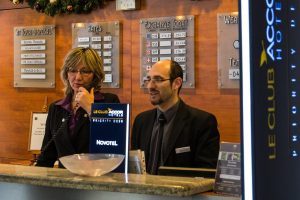 You may not have realized, but Solid Surface countertops can exist almost anywhere. And after we explain all the ways that we can help, you’ll be amazed at what you start noticing. Here are five products you can get from Solid Surface.
You may not have realized, but Solid Surface countertops can exist almost anywhere. And after we explain all the ways that we can help, you’ll be amazed at what you start noticing. Here are five products you can get from Solid Surface.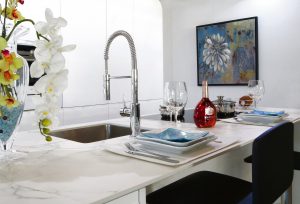 Kitchen countertops are often the focal point of any kitchen. Great care needs to be taken when deciding what will look the best in this busy room. Here are five different types of kitchen countertops and what to expect from them.
Kitchen countertops are often the focal point of any kitchen. Great care needs to be taken when deciding what will look the best in this busy room. Here are five different types of kitchen countertops and what to expect from them.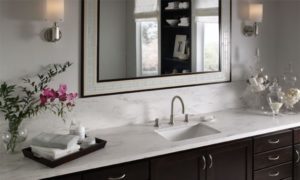 Do you have a
Do you have a 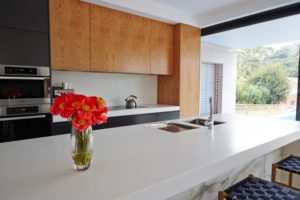 Installing solid-surface countertops yourself can be a challenging task for even the most avid DYIer. This is why so many professional services exist – to help navigate all the challenges and issues the layman is likely to encounter when trying to get a professional, long-lasting look in their countertops.
Installing solid-surface countertops yourself can be a challenging task for even the most avid DYIer. This is why so many professional services exist – to help navigate all the challenges and issues the layman is likely to encounter when trying to get a professional, long-lasting look in their countertops.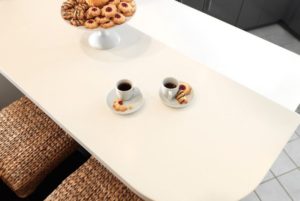 A solid surface countertop is one of the most functional and durable surfaces out there. It’s versatile and easy to maintain and comes in a wide variety of colors and patterns. Whatever brand you end up going with, solid surface countertops are a great selection for your
A solid surface countertop is one of the most functional and durable surfaces out there. It’s versatile and easy to maintain and comes in a wide variety of colors and patterns. Whatever brand you end up going with, solid surface countertops are a great selection for your 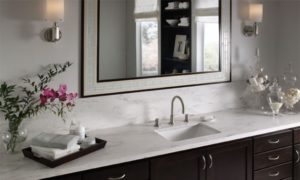 The phrase “solid surface” can be a bit confusing when you’re first learning about countertops and their potential materials. After all, aren’t all countertops a solid surface? However, when your contractor or renovator uses the phrase “solid surface countertops”, they’re referring to a specific man-made surface that has brought a significant new option to kitchen and bathroom renovations.
The phrase “solid surface” can be a bit confusing when you’re first learning about countertops and their potential materials. After all, aren’t all countertops a solid surface? However, when your contractor or renovator uses the phrase “solid surface countertops”, they’re referring to a specific man-made surface that has brought a significant new option to kitchen and bathroom renovations.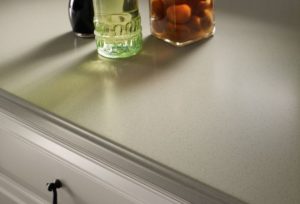 When you opt to install kitchen countertops, there are dozens of different kinds of surfaces to choose from. One of the most popular is a solid surface, like DuPont’s Corian or other similar brands. The man-made surface has several significant pros over more natural countertops like granite or marble, though it comes with its drawbacks as well. Here are some solid surface countertops pros and cons to help you make your decision.
When you opt to install kitchen countertops, there are dozens of different kinds of surfaces to choose from. One of the most popular is a solid surface, like DuPont’s Corian or other similar brands. The man-made surface has several significant pros over more natural countertops like granite or marble, though it comes with its drawbacks as well. Here are some solid surface countertops pros and cons to help you make your decision.



 Copyright © 2026 · Solid Surface · Web design by
Copyright © 2026 · Solid Surface · Web design by